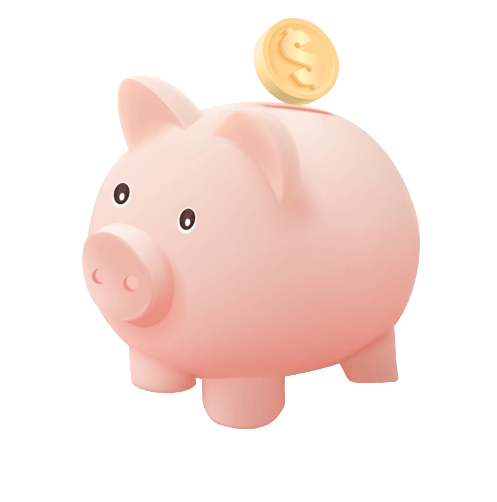How to Create Your Budgeting Journal
Have you found yourself in a place where you cannot pay your bills each month? Perhaps you do not know how much money you have each month or where your money goes each month. If this sounds familiar, you could benefit from creating a budget. That word may be scary to you, but it doesn’t have to be. This guide explains a budget and all the different types of journals you can create depending on the type of budget you need. Continue reading to find out more information about how to create your budgeting journal.
How to Create Your Budgeting Journal
There are countless options that can work as a budgeting journal. These are a great way to assist you in managing your money. If you opt to purchase one of the countless options available on the market, you want to ensure that the item you purchase has a table of content. This allows you to get to the page you need to without flipping through all the pages of the journal every time you want to get to your budget.
No matter which journal you purchase or create for yourself, you first want to have an understanding of what you want your budget to do. Are you trying to save money, pay down debt, or get your finances in order? Maybe you want to do all of the above. It is critical that you create your goals for yourself. Do not let someone else determine what your goals should be.
What is a Budget?
A budget sounds much scarier than it really is. All a budget really is is a plan to help you with your spending. It gives you an understanding of your expenses and income. It is not something to fear but to embrace as a plan to help you. You can use it for a specific amount of time, such as a month or year. You can also use a budget for a specific purpose, such as controlling your spending or saving for a large expense like a car. No two budgets are the same, and the best one for you meets your needs. There are various applications, tools, and spreadsheets available for you to use for your budgeting purposes. You can create your own journal to help you create a budget that meets your needs.
Monthly Budget
If you are interested in a budget that helps you understand your regular spending and income, a monthly budget may work well for you. A monthly budget allows you to see where your money is being spent and project how much money you have each month. This is a great starting point for any type of budget. It is also ideal if you have never created a budget before. Once you create a monthly budget, it is easier to create other types. There is a large amount of flexibility in the type of journal you can use for a monthly budget. Listed here are some of the more common types. Before you can use the journal, you must have an understanding of the types of items you purchase. There are essentials such as a mortgage, car payment, utilities, and some amount of food. There are other necessary bills you have to pay, like loans, cell phone, and gas. Then there is the non-essential and not needed category. Things like coffee or dinner at a restaurant can go here.
If you prefer to use numbers, a different option is to create a monthly journal that looks more like a checkbook. You put your monthly balance at the top of the record, just like you would with a checkbook. You can list out all of your known monthly bills on the left side. When you pay those bills, you deduct the total from the balance. When you have an additional expense that is not accounted for in the left column, you can add it to the right. You still deduct it from the balance. This way, you can see how many unexpected expenses you had and the cost. It also helps you determine if those are costs you could avoid.
Budget for Bills
If you tend to be forgetful about the bills you have to pay and when a budget journal for bills may be ideal for you. Suppose you are the person that has sticky notes reminding you when it is time to pay a bill; switch to a journal that functions as a bill tracker. The first step to using this type of journal is to go back through your bank statements for at least six months and write down all the bills you have and the amount you pay.
A bill tracker generally will have three different sheets to it. One for monthly bills, another for quarterly bills, and the last page are for annual bills. If you have bills that are paid in some other sequence, you will need an extra page for them. It would be best if you created a grid on a piece of paper or bought grid paper. Across the top, you want a space for the bill, the amount, the due date, and if it’s been paid. Then you can fill in all of your bills. If you do not put the date on it right away, you can photocopy the grid and use it for several months. You can also create an online copy of this. It would be best if you also left extra spaces towards the bottom so you can add new bills you have. You can create the same concept for your bills that are due quarterly and annually.
Budget for Spending
If you are in a good place and pay off all your bills on time, you may already have a budget without even knowing it. You are working towards paying down debt or have no debt at all. You are a rockstar budgeter. That doesn’t get you off the hook so easily, though. You should still budget and track your spending. This gives you a good indication of how much money you are spending in total and on non-essential items. When you have a budget for spending, it allows you to see trends. For example, you may have specific times when you spend more, like around the holidays. If you notice this, you can plan for it and have a cushion that doesn’t cause you to take on more debt or dip into savings. A spending tracker also gives you a good idea of where you are with your money at any point during the month. This can help you see if you are spending a little too much money in any given month and allow you to curb your spending.
This journal has a large amount of flexibility, and you can set it up any way that works best for you. However, there are some items you want to be sure to include. These are the item that was purchased, the date, cost, payment type, the store where it was purchased, and most importantly, whether it was a necessary item. You can also note if the purchase was a want and perhaps why you wanted it. This can give you some insight into why you are making purchases.
Budget for Savings
One of the more fun budget journals is one that helps you save money. You may have something specific you want to purchase, a trip you want to take, or maybe you just want to grow your savings account. No matter your reason, the best way to do it is with a budget. When it comes to a savings plan, a visual representation often works best. It is much easier to get excited about your savings when you can see them grow.
One way to journal your budget for your savings is to create a bar for each savings goal. For example, you may have one goal listed as a vacation, another goal is a new car, and the last goal may be general savings. If you have more than one savings goal, you can give them different colors to differentiate between them. Depending on the amount of savings you need for each item, some are going to be larger than others. Some may have a longer timeframe for you to save.
Budget to Pay Off Debt
For those who have debt, this is the most significant budget journal they can create. Those who have been able to pay down debt know what an amazing feeling it is to pay down and pay off debt. You may have various sources for your debt, including student loans, credit cards, a mortgage, and other loans. A great option to journal a debt pay-down budget is to create a bar across the top that shows how much money is left to pay and the date when the loan should be completely paid. Under the large bar, you can create smaller bars that represent goals that you have created for yourself to pay off this debt. These smaller bars should be manageable. For example, if your loan has a maturity date of three years and that is your payoff. You could create a goal of how much you pay down each month. Next, you can create another goal of how much you have paid down in six months. As you pay down your debt faster, you may be able to move the top line to the left.
Want More Information?
Many people have an idea of what it means to have a budget, but they just don’t know where to start. A journal is a great way to manage your budget regardless of what type of budget you want to create. The good news for you is that there are many resources available at the Goalry Mall. At the Budgetry Store, we have a robust library of educational materials available for you. You can learn about budgets, how to create them, and which one would work best for you. In addition, you are able to view videos and read articles related to your budgeting journey. Come check us out and see all of the resources we have available for you.
Create Your Budget.
Meet Budgetry.
Conclusion
It may seem difficult to create a budget at first, but if you keep doing it, it gets easier. This guide that shows you how to create your budgeting journal is a great help when you are just starting out on your budget creation path. When it comes to budgeting, no matter how difficult it may seem, it is always worth it in the long run. If you stick to it, you will see major gains in your budget.




